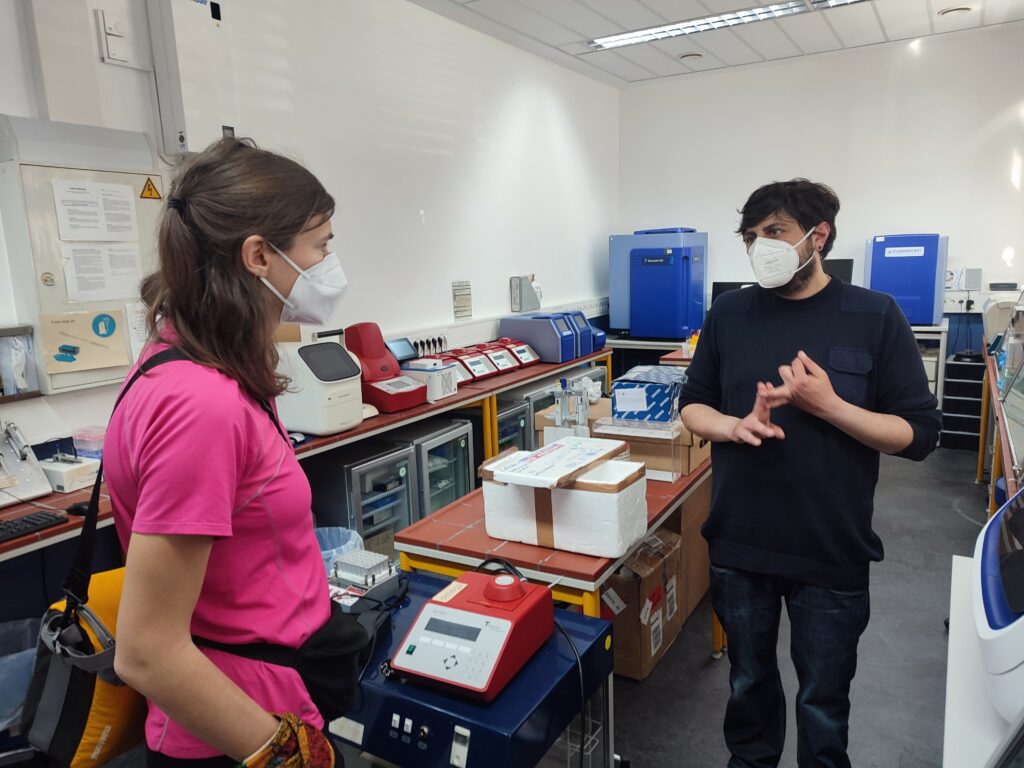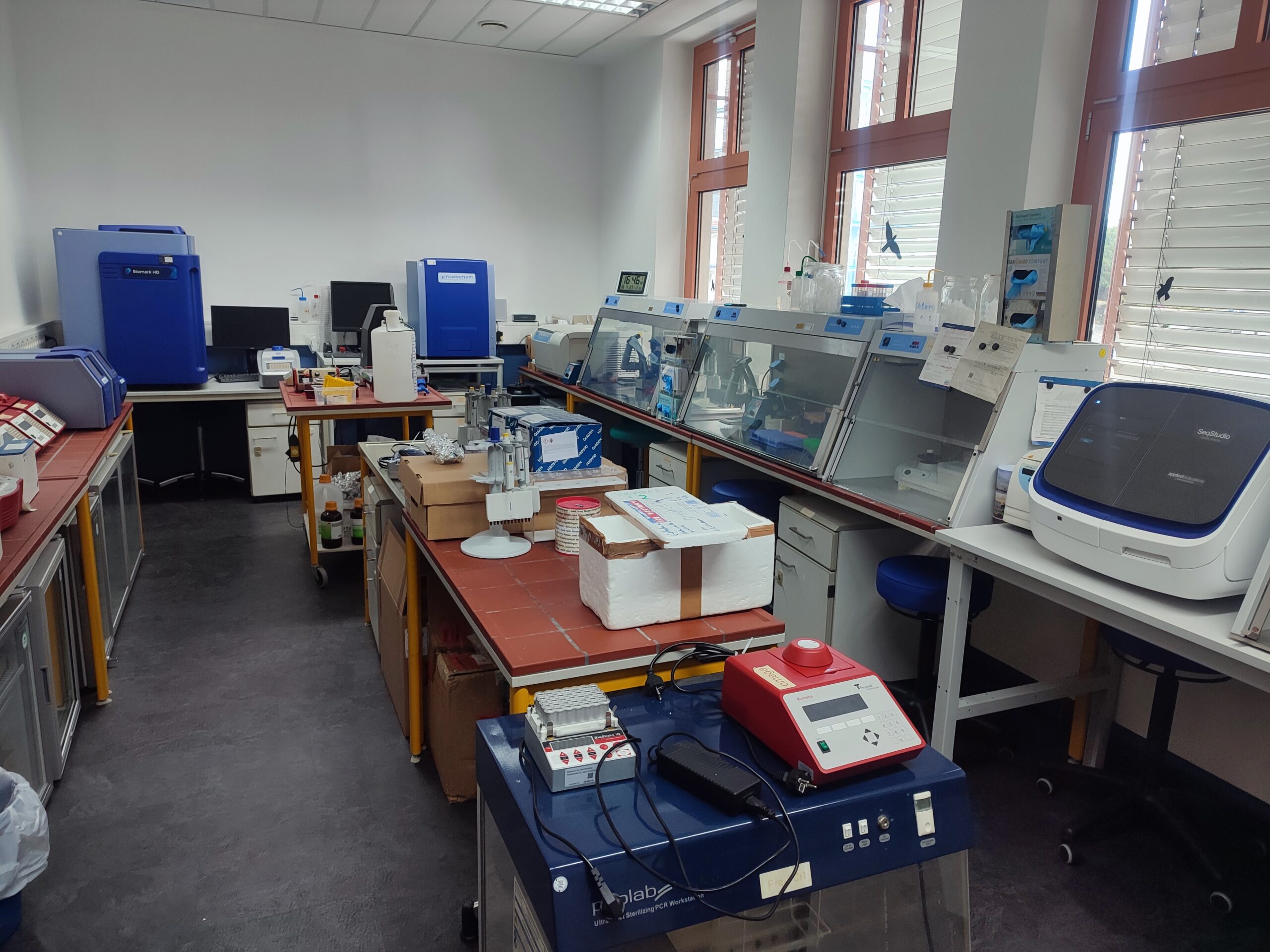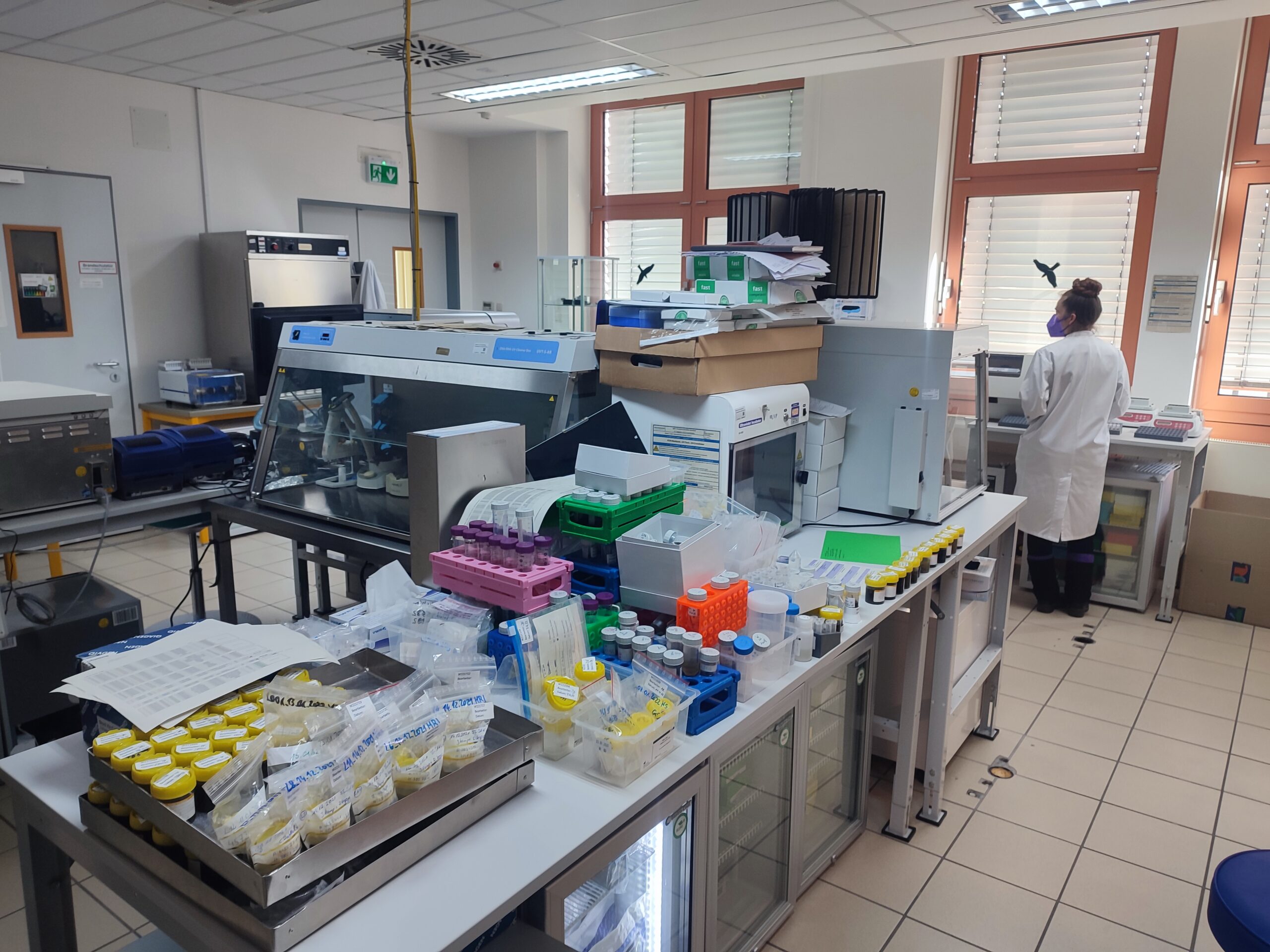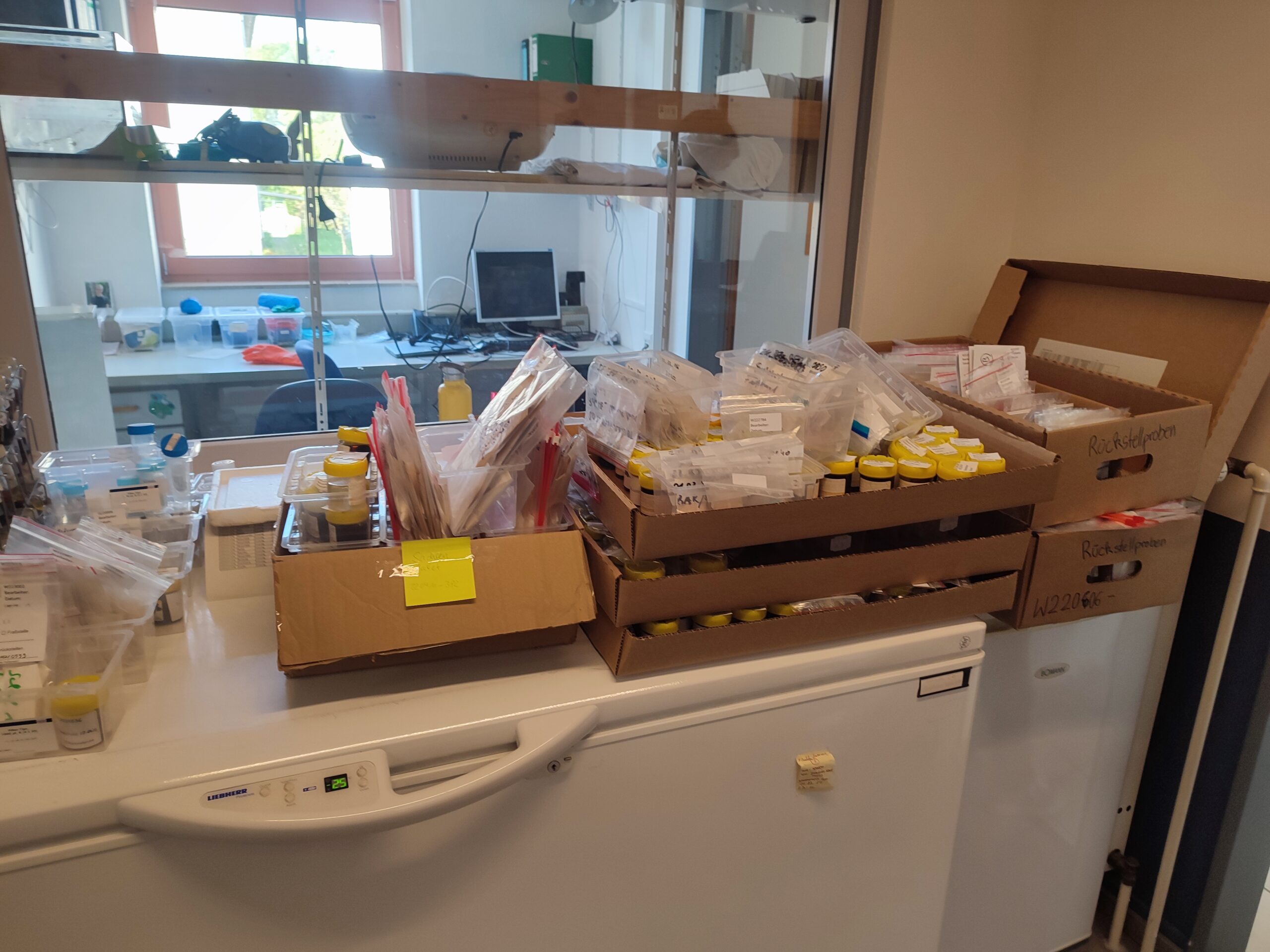We, humans have irreversibly altered the physical environment, and thus habitats of animals, plants, and other organisms that live on Earth. Conservationists look at all the individuals, populations and ecosystems that have been affected by habitat loss, exploitation, and/or environmental change, with the aim to make informed decisions that will ensure their survival into the future. However, how do we know which population is endangered and where should we focus conservation resources? This is where wildlife genetics comes into the picture, and we set out to find out more about the role of genetics in conservation.
Therefore, on our first day on the road, we visited the Senckenberg Center for Wildlife Genetics – a leading center for conservation genetics in Europe – to discuss how genetics can be a valuable tool within a broader conservation effort.
The Senckenberg Center for Wildlife Genetics
Closing our first day on the road, we roll into Gelnhausen, to meet with Dr. Carsten Nowak, the head of the Senckenberg Insitute´s Center for Wildlife Genetics. As we arrive, we crash a team meeting taking place outside in the Center´s garden, where the team is just discussing how to handle the large number of samples coming in the upcoming week. It is quickly becoming clear to us, that there is a growing demand for wildlife genetics in Germany. And indeed, the Center´s activities in wildlife monitoring and research fill a crucial role in modern nature conservation not just in the country, but Europe-wide as well. Wildlife genetics has been important in a multitude of research and species protection projects that serve the protection of wild animals as well as support human-wildlife coexistence.
Dr. Carsten Nowak, the head of the group together with Berardino Cocchiararo, manager of the laboratory, take us on a tour of the institute, its history and present activities. The Senckenberg Center for Wildlife Genetics was founded in Gelnhausen in 2008, with the focus on genetic wildlife monitoring and the application of molecular methods for determining population genetic patterns in threatened wildlife. The aim of the Center´s activities are specifically focusing on how human environmental impacts affect the genetic population structure of native species.

As Carsten and Berardino explain, the Center´s primary interest lays in native species such as the Eurasian beaver, Common hamster, Eurasian otter, Garden dormouse, Hazel dormouse, Eurasian lynx, Red deer, European wildcat, European bison, Grey wolf, Golden jackal and Brown bear. However, they also study other species groups depending on the research question in mind. The spectrum of methods applied includes various molecular genetic procedures for species and individual differentiation, as well as analyses to study genetic diversity, population structures, and hybridization. There are different procedures, depending on the question and the suitability of the sample.
Genetics and wildlife monitoring
Berardino tells us that for example about the wolf monitoring, where the method is based on a genetic fingerprint. The developed methods allow the distinguishing of individuals, as several places in the wolf genome are specifically made visible at which different individuals differ from one another. The extensive experience and the appropriate analysis methods allows the Center to differentiate between wolf, dog and even wolf-dog hybrids, which has gained increasing importance for national wolf monitoring since wolves returned to Germany twenty years ago.
Due to its impressive work, the Senckenberg Center for Wildlife Genetics has also been chosen as the German national reference center for wolf, wildcat and lynx monitoring and has been investigating all genetic samples from all around the nation in their laboratories, Carsten and Berardino explain. They currently receive about 4000 wolf, 1500 wildcat and 300 lynx samples yearly for analysis. The Center´s activities also include comparing genetic data across borders with reference laboratories in neighboring countries in order to track migration movements over long distances and to obtain reliable population data.




Research and the press
While we are walking through the different laboratories, the discussion comes to the topic of the media attention. Carsten and Berardino tell us about the difficulties the group faces as a reference center, specifically for wolf monitoring. Several media channels repeatedly claim that Senckenberg is not a neutral institution in the wolf investigation and cooperates with “wolf-friendly” organisations. What these claims disregard, however, is that as a research institution, Senckenberg has to comply with strict international standards in their scientific practices. While populist media outlets aim to create stories that sell well, the Center is not a commercial company working for profit. The main aim of the Center is to conduct reliable nature research, fostering the conservation and management of endangered European wildlife.
Conservation genetics accelerates the capacity of wildlife managers to generate the data necessary for sound management decisions. Institutions like the Senckenberg Center for Wildlife Genetics, who relentlessly work on developing new molecular tools for genetic wildlife monitoring will therefore continue to have an integral role in monitoring population dynamics and understanding conservation priorities in the future.
There is more! Go check out the Center´s currently ongoing projects as well as publications!

